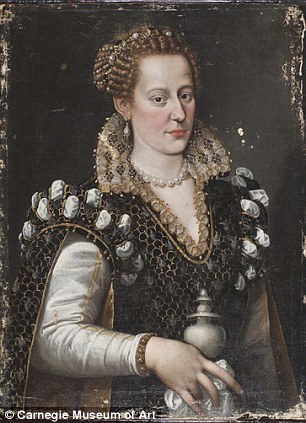A small corner of the internet dedicated to late medieval things, mostly merchants, money, and mead-induced violence (the struggles of finding 'm' words). Follow me on Twitter: @CatherineGower
Last active 60 minutes ago
Don't wanna be here? Send us removal request.
Photo

Even medieval monks complained about their jobs!
73K notes
·
View notes
Photo

Prague’s astrological clock is the oldest still functioning clock in the world, 1410 [970 x 860]
1K notes
·
View notes
Link
The roll has been digitized and can be explored online for free.
“The Canterbury Roll is a 15th-century English genealogical text. It was created in the late 1420s/ early 1430s and subsequently modified on a number of occasions before final revisions were made to it, most probably during the reign of Richard III (1483–1485).
“The Roll’s fate between the late-15th century and its acquisition in 1918 by Canterbury College, the University of Canterbury’s predecessor, remains unclear.
“The Canterbury Roll Project is a multi-stage initiative led by the UC History Department. The project was initiated in 2012/13 with the launch of a website created by UC Summer Scholar Maree Shirota. This was designed to provide an introduction to the Roll and access to images of the manuscript.”
16 notes
·
View notes
Text
Happy Birthday, Elizabeth I
7 September 1533: 485 years young.

Elizabeth I’s arrival into the world was not an easy one. The road to her parents’ marriage - hindered for years by Henry VIII’s, her father’s, existing marriage to Catherine of Aragon - had been a tricky one, but, by September 1533, all seemed settled into place. Anne Boleyn, her mother, had been crowned only that May, while pregnant with Elizabeth, and her position appeared secure in the king’s affections and in the role of queen. Supposedly a grand tournament was planned for the expected prince. The prince never came and the planned celebrations were tactfully downsized.
Yet Elizabeth, despite the initial disappointment, proved to be a remarkable historical figure in her own right, over-shadowing the reigns of her brother and sister. Her reign saw the rise of England’s naval power and the establishment of an English Church, left in an uncertain state by her predecessors. Elizabeth herself was a fascinating figure, subject to much speculation, both now and in her own time. She was an enigma, one who would be later lauded as a feminist example, yet who presented herself within the patriarchal terminology of her own time. ‘I know I have the body of a weak, feeble woman; but I have the heart and stomach of a king - and of a King of England too’ - and all that! There was little else that she could do on that front, but she proved a wily and independent presence nonetheless in the political cesspit of sixteenth-century Europe. Her life - and its various ups and downs - makes for a dramatic re-telling and remains a popular subject of historical fiction via both literature and film. As much as she remains an iconic presence in modern media, she too was always conscious of her image, presenting herself as the iconic Virgin Queen, Gloriana, a figure both to revere and to fear.
Anyway, enough with my over-simplified summary of Elizabeth I. Let’s get onto some juicy facts about the legendary Virgin Queen...

1 - She is supposed to have invented gingerbread men. Elizabeth was notorious for her sugar consumption and her visible tooth decay in later life. Of course it was not Elizabeth down in the kitchens of Richmond Palace, but gingerbread men were supposed to have been fashioned in her kitchens, often in the form of whichever foreign dignitary was visiting.
2 - She liked to give the men of her court nicknames. Robert Dudley, a long-time object of her affections, was known as ‘eyes’. Poor Francois, Duke of Anjou, the French prince, who was badly scarred by smallpox, sent to court her was ‘frog’.
3 - According to Sir Walter Scott in his rather over-romanticised account of Elizabeth and Walter Rayleigh’s first meeting, Rayleigh chose to throw his cloak over a puddle so that the queen could walk without wetting her feet too much. Unless he carried about a rain mac, I’m uncertain how effective this would have been, but she seemed to appreciate the gesture.
4 - Elizabeth presented a refined image of herself to the world, but behind closed doors, she could prove rather different. If she was alive today, she might wish to refer to herself as being ‘not like other girls’. She reportedly swore, picked her teeth (while she had them) with a golden toothpick, and enjoyed crude humour. Such a side was apparently only witnessed by those closest to her.
5 - On the subject of crude humour, take a moment to remember poor Edward de Vere, 17th Earl of Oxford, who reportedly farted in the queen’s presence. Embarrassed, he was supposed to have left court for a number of years before returning, only to be welcomed by the Queen with a ‘My Lord, I had forgot the Fart!’
6 - Crudity had a limit however in Elizabeth’s court. When her godson, John Harington, in 1596 wrote a treatise entitled the Metamorphis of Ajax, a thinly-veiled comparison of Elizabethan politics to the toilet, his godmother was not impressed. Harington did win his way back into her good books via the book that had caused so much trouble. His designs for a flushing water-closet were adopted and installed at Richmond and Elizabeth was reportedly satisfied with this development.
7 - Elizabeth was remarkably good at languages and spoke French. Italian, and Latin, as well as being able to read Greek. She reportedly rebuked the Polish ambassador before her court in Latin.
8 - She could have been known as the Virginals Queen. The Virginals were a type of harpischord (think early keyboard) and Elizabeth was an adept player, entertaining the Scottish ambassador, Sir James Melville, on his visit.
9 - In October 1562, Elizabeth became dangerously ill with smallpox, but survived with minimal scarring. Unfortunately, her lady-in-waiting, Lady Mary Sidney, who had nursed her through the sickness, was not so lucky. While Lady Sidney survived, her face had changed a great deal as a result of the scarring.
10 - Elizabeth’s association with the famed astrologer, magician, and scientist, Dr John Dee, was renowned. Dee helped determine the date of her coronation and his assistance was called on at other times. In March 1575, Elizabeth and a party of courtiers came by to visit Dee at his house at Mortlake. Unfortunately, Dee’s wife had died only hours before and so Elizabeth refused to enter the house, requesting instead that Dee brought out the ‘magic glass’. Dee obliged and Elizabeth enjoyed a chance at looking into the future. I wonder what she saw...

16 notes
·
View notes
Photo

Young Lady in Profile Reading. Edgar Maxence
1K notes
·
View notes
Photo




A Pennsylvania museum has solved the mystery of a Renaissance portrait in an investigation that spans hundreds of years, layers of paint and the murdered daughter of an Italian duke.
Among the works featured in the Carnegie Museum’s exhibit Faked, Forgotten, Found is a portrait of Isabella de'Medici, the spirited favorite daughter of Cosimo de'Medici, the first Grand Duke of Florence, whose face hadn’t seen the light of day in almost 200 years.
Isabella Medici’s strong nose, steely stare and high forehead plucked of hair, as was the fashion in 1570, was hidden beneath layers of paint applied by a Victorian artist to render the work more saleable to a 19th century buyer.
The result was a pretty, bland face with rosy cheeks and gently smiling lips that Louise Lippincott, curator of fine arts at the museum, thought was a possible fake.
Before deciding to deaccession the work, Lippincott brought the painting, which was purportedly of Eleanor of Toledo, a famed beauty and the mother of Isabella de'Medici, to the Pittsburgh museum’s conservator Ellen Baxter to confirm her suspicions.
Baxter was immediately intrigued. The woman’s clothing was spot-on, with its high lace collar and richly patterned bodice, but her face was all wrong, ‘like a Victorian cookie tin box lid,’ Baxter told Carnegie Magazine.
After finding the stamp of Francis Needham on the back of the work, Baxter did some research and found that Needham worked in National Portrait Gallery in London in the mid-1800s transferring paintings from wood panels to canvas mounts.
Paintings on canvas usually have large cracks, but the ones on the Eleanor of Toledo portrait were much smaller than would be expected.
Baxter devised a theory that the work had been transferred from a wood panel onto canvas and then repainted so that the woman’s face was more pleasing to the Victorian art-buyer, some 300 years after it had been painted.
Source/Read More
104K notes
·
View notes
Photo

If you were visiting a Mediterranean harbour anywhere fro the 11th to the 19th century, you would have heard a strange yet familiar language.
Se ti saber, ti responder. Se non saber, tazir, tazir. *
Understood from Valencia to Istanbul, from Tunis to Venice, this was the language of commerce and diplomacy and commonly used among European renegades and the captives of the Algerian pirates.
This language, Lingua Franca or Sabir, flourished in the 10th century and was based on Toscan Italian and Occitan. (Back then, Catalan was a dialect of Occitan, so count us in as well!). It incorporated words from Arabic, Greek, Amazigh and Turkish, and later from Portuguese, French and Spanish, too.

[Image: expansion of the Kingdom of Catalonia and Aragon (green), its Consulates of the Sea (dots), and commercial expansion (orange lines). It is not hard to see why Sabir had such influence of Catalan.]
In the 19th century, with the expansion of European colonialism in northern Africa, Sabir was replaced by the colonizer’s languages.
Nowadays, lingua franca is used to mean any language or dialect which is used to communicate by people who speak different languages (nowadays, mainly English). This term originates from the Mediterranean Lingua Franca.
Sabir left traces in present Algerian slang and Polari, and even in geographical names. It also appears in literary works and theatre plays like Molière’s Le Bourgeois gentilhomme and different tales by Cervantes.
2K notes
·
View notes
Photo

The Wheel of Fortune, Hortus Deliciarum, from Manuscript by Herrad of Landsburg (1130-1195), Hohenburg Abbey, Alsace.
GIFed by @mozgony
1K notes
·
View notes
Photo










Dancing in Film:
A Knight’s Tale (2001) dir. Brian Helgeland
Choreography by Stuart Hopps
6K notes
·
View notes
Photo

Detail of Portrait of a Lady, 16th century, by Pedro Campaña (1503-1580)
5K notes
·
View notes









